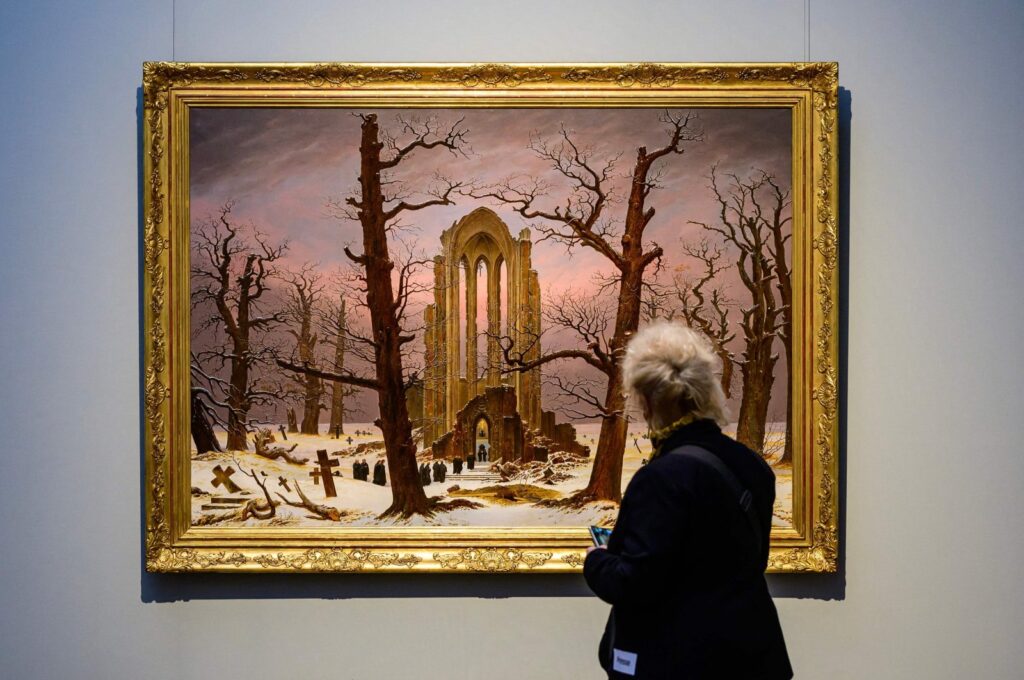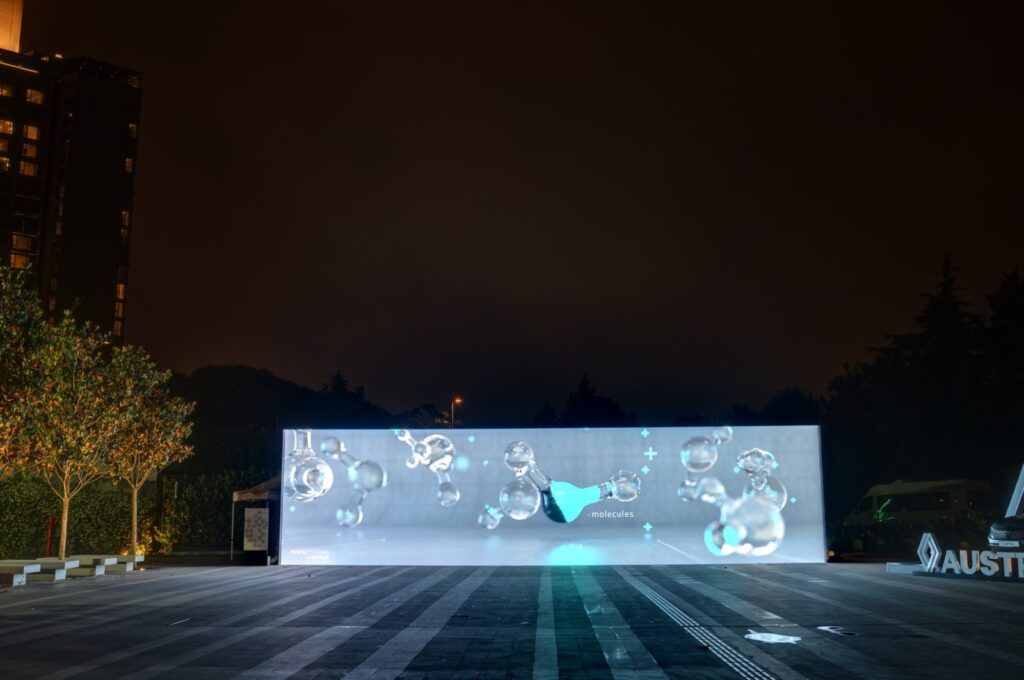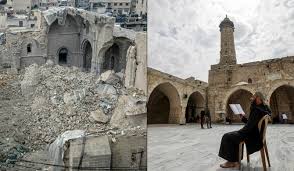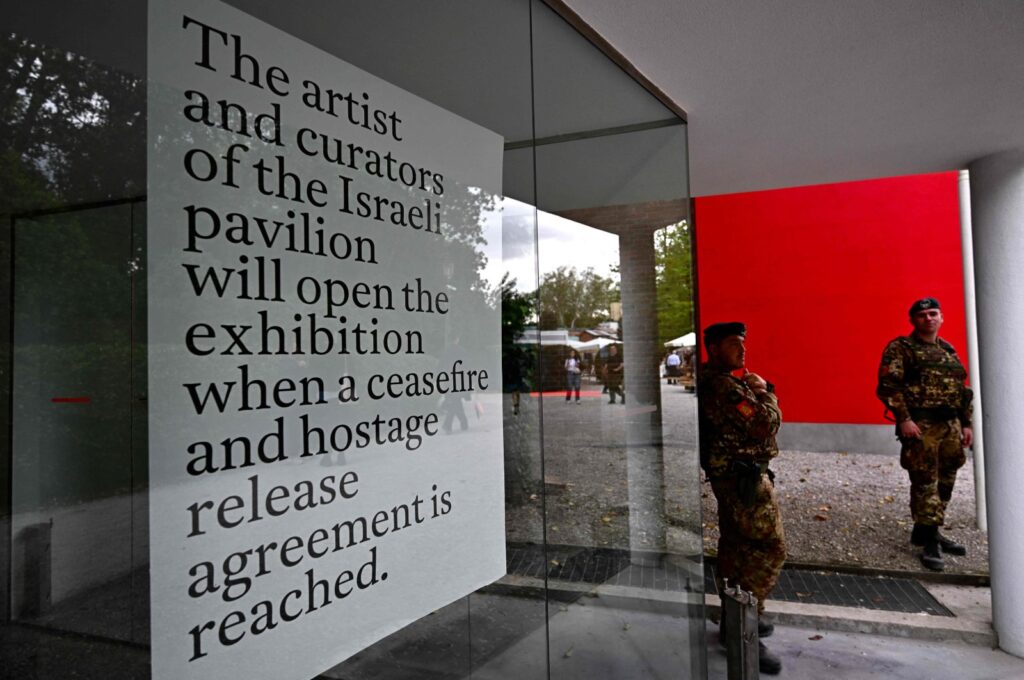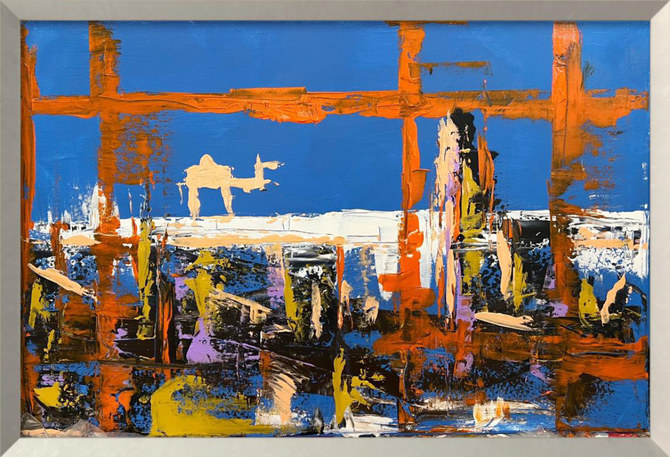
Afshan Ahmed
“I thought ‘sah’ [‘correct’ in English] would be the best word to experiment with. I took my time, but it turned out to be the messiest and most frustrating one,” says Emirati artist Shamma Al Amri, as she points to a large, framed paper with the Arabic word written in ink over and over again in asymmetrical rows. It is the opening piece of her new solo exhibition, So to Speak, at Tashkeel.
It’s a word that has various meanings for native Arabic speakers. It’s also a word that consumed Al Amri entirely for most of this year. One that she has explored in all its facets in her new body of work, spanning a diversity of mediums, from metal and wood to paper, prints and layers of plexiglass with writing embossed on each.
:quality(70)/cloudfront-eu-central-1.images.arcpublishing.com/thenational/URVJIDPPNQFQ5O4TLXNZHW72SE.jpg?w=810&ssl=1)
Al Amri, who is the 14th participant to present a solo exhibition as part of Taskeel’s Critical Practice Programme, has focused her entire collection on studying the Arabic language. By examining and analysing text found in her surroundings, she not only endeavours to extract its social, political and collective value, but sees it as a path to find a way back to her mother tongue.
So to Speak builds on her ongoing exploration of the power that words hold in different contexts and experimentation with the visual representation of language. While developing the works, she was mentored by typographer, writer and graphic designer Huda Smitshuijzen AbiFares and Emirati artist Mohammed Kazem.
:quality(70)/cloudfront-eu-central-1.images.arcpublishing.com/thenational/Z7MSAN5ZPNETJI6SL2JN2ZAOP4.jpg?w=810&ssl=1)
“I’m really interested in how language affects our function in society. Some languages have specific words that do not exist in other languages, so we can only imagine what input it has in the way a person interacts with the world,” she says.
“The other entry point to my work is the extraction of myself and the Arabic language from the contemporary arts landscape, which is predominantly English and western-speaking,” says the multidisciplinary artist, who has master’s degrees in culture and creative industries, and contemporary art practice from the Royal College of Art in London.
But the fixation with the word ‘sah’ began with the UAE’s national oath, she says, as she points to a plexiglass block that has Arabic sentences laid over one another, rendering them illegible. This is The Artist’s Oath, a condensed representation of her two-year research into the country’s oath, and a distillation of defining words, such as correct, truth and loyalty, which citizens commit to.
:quality(70)/cloudfront-eu-central-1.images.arcpublishing.com/thenational/TLUVJW5NDFH2BPESE7DO4UCFU4.jpg?w=810&ssl=1)
“As an artist, I wanted to see where I sit and whether I am bound by an oath. I started my research to unpack how this impacts my practice,” she says.
“I presented it in a transparent way to say: here are all the ways I’m trying to decipher language and meaning, but then you look closely and all you see is nothing but a web of words, flipping the entire thing on its head.”
There’s an inherent conflict in what Al Amri is trying to achieve. She’s trying to impose self-discipline and “correctness” in her method, while questioning what it looks like in all her works. Her Correct series of calligraphy reed and ink on paperis an exercise in evoking emotion with every ‘sah’ that she painstakingly etches.
:quality(70)/cloudfront-eu-central-1.images.arcpublishing.com/thenational/PZZMW5CYMNCNDJAF4PC6D4A3UA.jpg?w=810&ssl=1)
“I wanted to perfectly repeat the word on a plain paper with no lines until the ink ran dry, but every ‘sah’ created a different ‘sah’. It became meditative and turned into a psychological investigation,” says Al Amri, who mainly works with root words in the Arabic language.
Root words, she says, create a whole network of meanings that feed into one another.
Take her Diction series, six pieces of dyed newspaper with the word ‘sah’ cut out from each one to allow light to pass through.This is a visual and metaphorical statement on the word denoting truth, one that is upheld by a sahifah (Arabic for page/newspaper) and asahafiun (Arabic for journalist), both words that have ‘sah’ in them.
:quality(70)/cloudfront-eu-central-1.images.arcpublishing.com/thenational/LUXLKXUE5VDMJOUTXBSGGSGGI4.jpg?w=810&ssl=1)
She then applies her experiment to a social setting by engaging inmates of The Punitive and Correctional Institute in Dubai to create hand-cut wood sculptures of the word ‘sah’ and construction workers to mould rebar rods into it.
“With the inmates, I wanted to see how they’d interpret and create it in their own style,” she says. “What I found was that they could not escape the prescribed template, or the correct way of doing it, and ended up with very similar designs. They took an order and did not exercise any freedom.”
With the construction workers, she found that every time they attempted to model the rods into a ‘sah’, the repetition only resulted in the collapse of the correctness.
:quality(70)/cloudfront-eu-central-1.images.arcpublishing.com/thenational/Q65E2S6D5BHIHFX2AW5A6RTC2A.jpg?w=810&ssl=1)
“It’s a very telling outcome because in both instances, the creators need to follow a norm in their daily work, whereas as an artist you don’t,” she says.
As part of the exhibition programme, Al Amri will lead tours, talks, poetry evenings and workshops at Tashkeel to provide an in-depth perspective of her works.
Lisa Ball-Lechgar, the deputy director of Tashkeel, says that this exhibition underscores Al Amri’s commitment to learning and her extensive research into language and its expression through art.
“With such a powerful range of works produced during her year on Tashkeel’s Critical Practice Programme, the impact of this sort of support for the UAE’s creative community is tangible,” she says.
Courtesy: thenationalnews
The post Shamma Al Amri unpacks the Arabic language in her new exhibition at Tashkeel appeared first on The Frontier Post.




